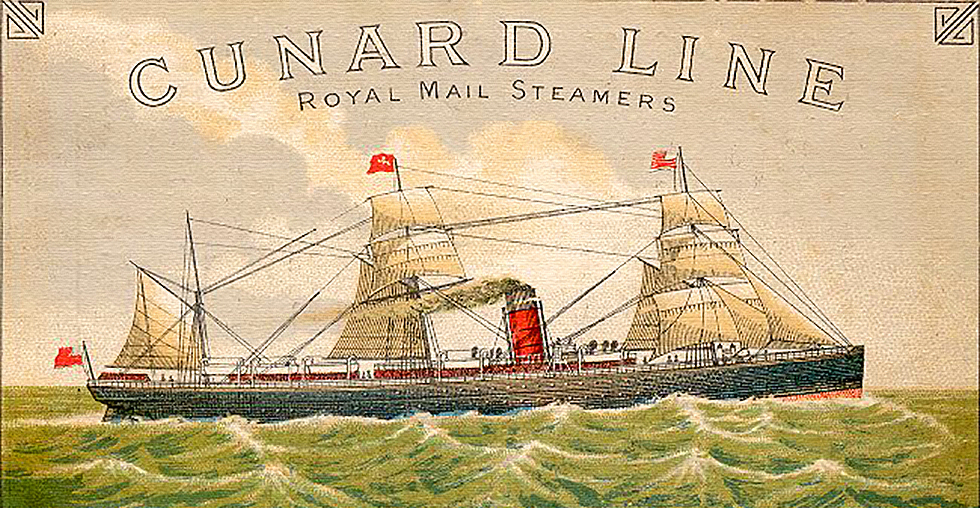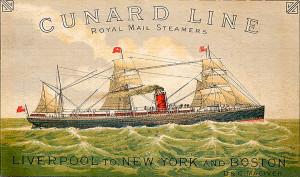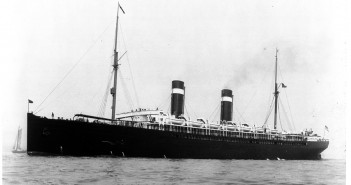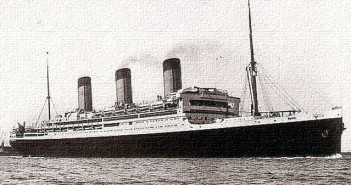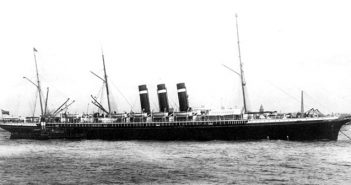Although largely unremembered today, Bothnia was one of the stalwart liners that helped make Cunard the standard for safe and reliable transatlantic service.
Bothnia was launched on 4 March 1874 at the J&G Thompson Clydebank shipyard.
The Glasgow Herald of 7 March reported: “[She] is the largest steamship that has yet been constructed for the Cunard Line. The Bothnia is upwards of 4500 tons burthen, and of the following dimensions: Length overall 455 feet, breadth of beam 42 feet 6 inches; depth 36 feet. Accommodation is provided for 300 first-class and 800 third-class passengers. She is barque-rigged, and has four decks, namely the upper or promenade deck, the spar deck, the main deck, and the lower or orlop deck. The Bothnia is fitted with compound engines of 600-horsepower, of the massive description common to Cunard liners, and so essential for safely ploughing the Atlantic.”
The story continued: “The Bothnia, it is hardly necessary to say, is built in the most substantial manner, and is indeed in all respects one of the finest of the thirty-four steamships which have been constructed by the Messrs Thomson for the Cunard Company.”
Bothnia sailed on her maiden voyage, Liverpool to New York via Queenstown, on 8 August 1874. In 15 April 1885, she made her first voyage from Liverpool to Boston.
Bothnia, after reliably serving Cunard and her passengers on the North Atlantic for over two decades, was sold in 1898 and scrapped at Marseilles in 1899.
Please help keep Ocean Liners Magazine afloat. Any amount will be greatly appreciated. Think of it like tipping your history steward.
—Regards, John Edwards, Editor/Publisher.

